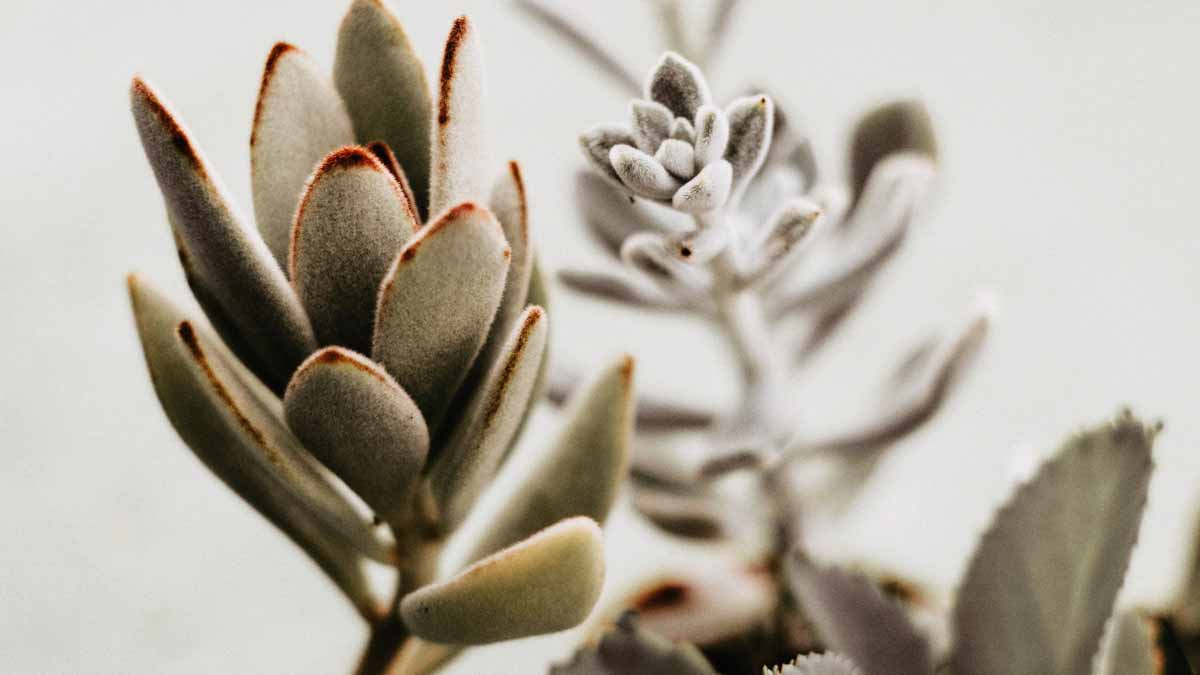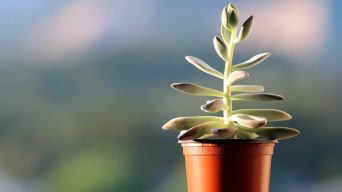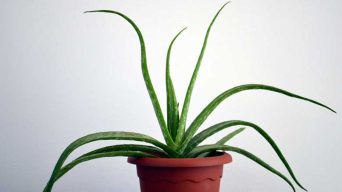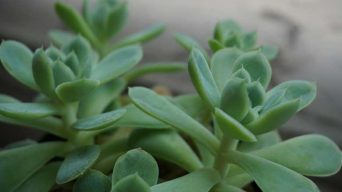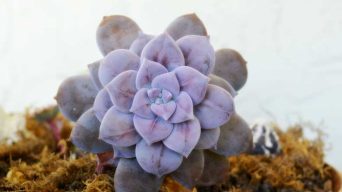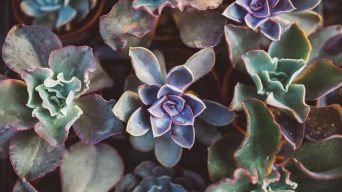The panda plant, also known as the Kalanchoe tomentosa, is a popular succulent easily recognizable by its fuzzy, grey-green leaves with brown spots on the tips.
These plants are native to Madagascar and can grow up to 24 inches tall.
Panda plants are easy to care for and make a great addition to any indoor or outdoor space.
However, they can sometimes get leggy, meaning the stems become long and thin and the leaves become spaced out. This can happen if the plant is not getting enough sunlight or if it is overfertilized.
This article will give you everything you need to know about fixing a leggy panda plant.
We will go over the causes of legginess, how to prevent it, and how to fix it once it has already happened.
What Causes a Panda Plant to Get Leggy?
There are a few reasons why your panda plant might be getting leggy.
One reason is that it is not getting enough sunlight.
Panda plants need at least six hours of direct sunlight each day to stay healthy. If they do not get enough sunlight, they will start to stretch out and become leggy.
Another reason your panda plant might get leggy is that it is overfertilized.
Panda plants do not need a lot of fertilizer, and too much can harm them.
If you fertilize your panda plant too much or use high nitrogen fertilizer, the excess nutrients will cause the succulent plant to stretch out and become leggy.
How To Tell If a Panda Plant Is Leggy?
There are a few signs that you can look for to tell if your panda plant is leggy.
These signs include:
The Stems of the Plant Are Long and Thin
If the stems of your panda plant are longer and thinner than usual, this is a sign that the plant is leggy.
When a panda plant grows in low light conditions, the stems will become longer as the plant tries to reach for the light. This causes the stems to stretch out and become thin.
The lack of sunlight can also cause the stems to become weak and floppy.
The Leaves Are Spaced Out
If the leaves of your panda plant are further apart than usual, this is another sign that the plant is leggy.
When a panda plant does not get enough sunlight, the leaves will grow further apart in an attempt to reach for the light. This causes the plant to look leggy and sparse.
The Leaves Are Pale
If the leaves of your panda plant are pale, this is another sign that the plant is not getting enough sunlight.
When a panda plant does not get enough sunlight, the leaves will lose their green color and turn pale. This is because the chlorophyll in the leaves is not being used to produce food for the plant.
The Plant Is Not Growing New Leaves
When a Kalanchoe tomentosa plant doesn’t get enough sunlight, it will also stop growing new leaves. This is because the plant is not getting the energy it needs to produce new leaves.
Also, if the plant is overfertilized, it will not be able to produce new leaves. This is because the excess nutrients will prevent the plant from absorbing water and nutrients from the soil.
The Leaves Are Drooping
A leggy Kalanchoe tomentosa plant will also have drooping leaves. This is because the stems are not strong enough to support the weight of the leaves.
The long and thin stems of a leggy plant cannot support the weight of the leaves, causing them to droop.
The Plant Is Not Flowering
If your panda plant is not flowering, this is another sign that the plant is leggy.
Panda plants will only flower when they are healthy and receive proper care. If the plant is not getting enough sunlight or is overfertilized, it will not flower.
How to Fix a Leggy Panda Plant
There are a few things that you can do to fix a leggy panda plant.
We will go over each of these methods below.
Give the Plant More Sunlight
If your panda plant is not getting enough sunlight, the best thing that you can do is to give it more sunlight.
Panda plants need at least six hours of direct sunlight each day to stay healthy. If your plant is not getting enough sunlight, move it to a location where it will get more sun.
An indoor panda plant can be placed near a south-facing window where it will get the most sunlight.
If you have an outdoor panda plant, you can move it to a location where it will get more sun. Ensure the location is not too hot or sunny, as this can damage the leaves.
Prune the Plant
Another way to fix a leggy panda plant is to prune it. Pruning will help make the plant fuller and promote new growth.
To prune a panda plant, cut back the leggy or damaged stems. You can also remove any leaves that are yellow or brown.
When pruning your panda plant, use sharp, clean shears. This will help to prevent the plant from being damaged.
Don’t Overfertilize the Plant
If your panda plant is overfertilized, this can cause the plant to become leggy. This is because the excess nutrients will promote leggy growth.
Stop fertilizing the plant and flush the soil with water to fix this. This will help to remove any excess nutrients from the soil.
You should only fertilize your panda plant once every two months during the growing season. Don’t use a high nitrogen fertilizer, as this can promote leggy growth. It is best to use a balanced fertilizer that is low in nitrogen.
Repot the Plant
An overfertilized panda plant may also need to be repotted. This is because the excess nutrients can build up in the soil and cause problems for the plant.
To repot your panda plant, remove it from its current pot and place it in a new pot that is filled with fresh, well-draining soil. Be sure to use a pot that is only slightly larger than the current pot.
Ensure that the plant has enough drainage holes in the bottom of the pot. This will help to prevent the roots from sitting in water, which can cause them to rot.
How To Prune A Leggy Kalanchoe Tomentosa
To prune a leggy Kalanchoe tomentosa, follow these steps:
- Cut back the leggy or damaged stems with sharp, clean shears.
- Remove any yellow or brown leaves.
- Prune the plant back to a healthy bud.
- Cut at a 45-degree angle just above the bud.
- Repeat this process every two to three weeks during the growing season.
Pruning a leggy Kalanchoe tomentosa will help make the plant fuller and promote new growth. Be sure to use sharp, clean shears when pruning the plant to prevent damage.
How To Prevent a Leggy Panda Plant
There are a few things that you can do to prevent your panda plant from becoming leggy.
We will go over each of these methods below.
Give the Plant Enough Sunlight
One of the main reasons that panda plants become leggy is that they are not getting enough sunlight.
Panda plants need at least 6 hours of sunlight daily to stay compact and not become leggy.
If you are growing your panda plant indoors, place it near a sunny window. A south-facing window is ideal. This will give the plant the most amount of sunlight possible.
If you are growing your panda plant outdoors, place it in an area with at least 6 hours of direct sunlight per day.
During the hot summer months, you may need to give your panda plant some partial shade by placing it in a spot that gets morning sun and afternoon shade.
Turn the Plant Regularly
Another reason panda plants can become leggy is because they are not turned regularly.
When a plant is not turned, it will grow towards the light source. This causes the plant to become long and leggy.
To prevent this, turn your panda plant every week or two. This will ensure that the plant grows evenly and does not become leggy.
Make Sure Other Plants Are Not Blocking the Sunlight
If you have other plants blocking the sunlight from reaching your panda plant, this can cause the plant to become leggy.
To prevent this from happening, make sure to trim any plants that are blocking the sunlight from reaching your panda plant. This will ensure that the plant gets enough sunlight and does not become leggy.
Prune the Plant Regularly
Pruning your panda plant regularly will also help to prevent it from becoming leggy.
When you prune a plant, you are essentially cutting off the tips of the plant. This causes the plant to branch out and become bushier.
To prune your panda plant, cut off the tips of the plant with a sharp pair of scissors.
Make sure to cut off about 1-2 inches of the plant. You can prune your panda plant every few weeks or so.
Don’t OverFertilize the Plant
Overfertilizing your panda plant can also cause it to become leggy.
When you overfertilize a plant, the plant will start to grow too fast. This causes the plant to become long and leggy.
To prevent this from happening, ensure to fertilize your panda plant only once a month during the growing season.
Use a Balanced Fertilizer
When fertilizing your panda plant, make sure to use a balanced fertilizer. A balanced fertilizer has equal nitrogen, phosphorus, and potassium ratio.
Some fertilizers have a higher ratio of one nutrient over the others. For example, you may see a fertilizer that has a 10-10-10 ratio. The fertilizer has 10% nitrogen, 10% phosphorus, and 10% potassium.
A balanced fertilizer will help prevent your panda plant from becoming leggy.
Keep an Eye on the Plant
Finally, keeping an eye on your panda plant and watching for any signs of problems is essential.
If you see that your plant is starting to become leggy, make sure to take action right away. The sooner you take action, the better your chance of saving your plant.
If you follow the tips above, you should be able to fix your leggy panda plant and prevent it from becoming leggy in the future.
Final Thoughts
If your panda plant looks a little leggy, don’t worry – there are a few easy things you can do to fix the problem.
First, try moving your plant to a brighter location. This will encourage it to produce more compact growth.
You can also cut back the leggy stems, encouraging the plant to produce more bushy growth.
Finally, ensure you’re not overfertilizing – too much nitrogen can cause leggy growth.
With care, your panda plant will look lush and healthy in no time!

